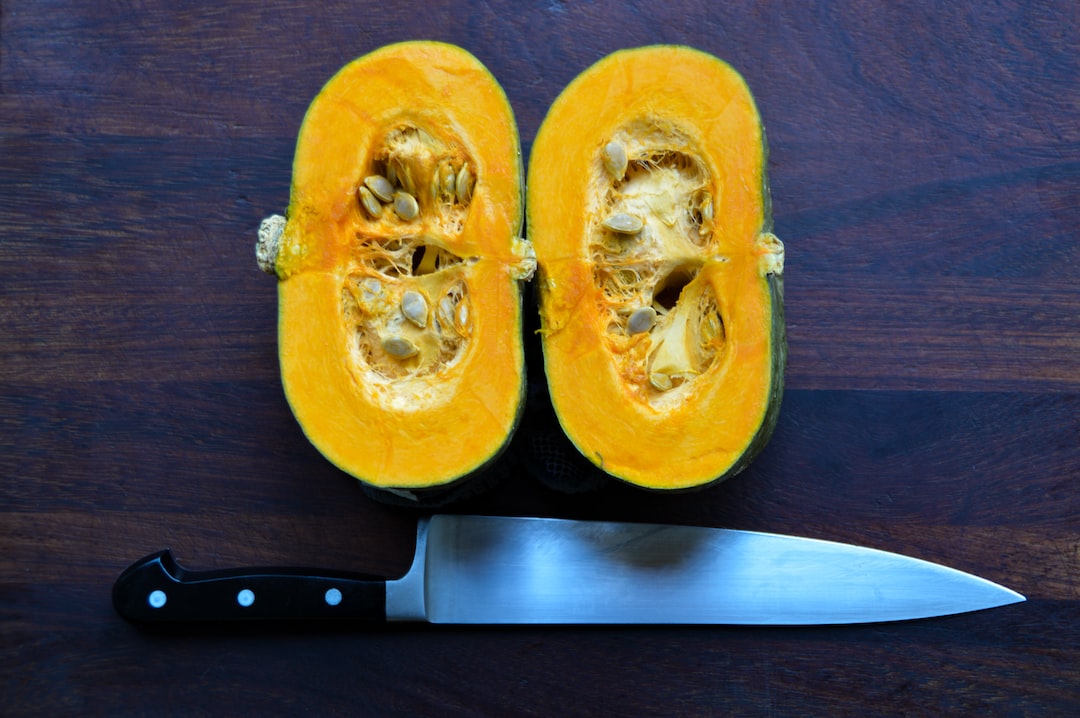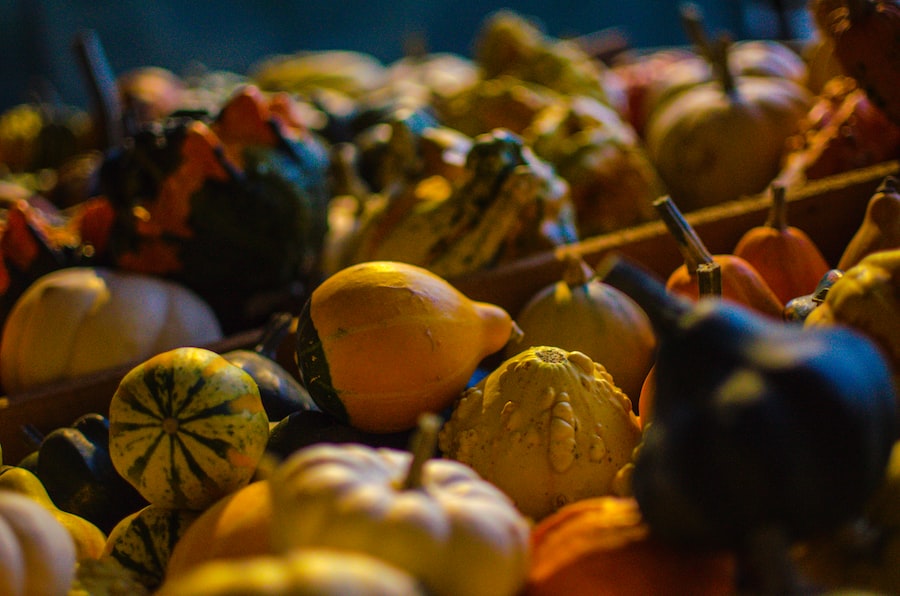Ready, Set, Squash: How to Tell When Your Spaghetti Squash is Ripe and Ready to Eat

Spaghetti squash has gained popularity in recent years as a healthy alternative to traditional pasta. This unique vegetable gets its name from the fact that when cooked, its flesh separates into long strands that resemble spaghetti noodles. It is a versatile ingredient that can be used in a variety of dishes, from salads to casseroles.
Not only is spaghetti squash low in calories and carbohydrates, but it is also packed with vitamins and minerals. It is a great source of vitamin C, vitamin A, and potassium. Additionally, it is high in fiber, which can aid in digestion and help you feel fuller for longer.
Key Takeaways
- Spaghetti squash is a nutritious and versatile vegetable that can be used as a low-carb substitute for pasta.
- Knowing when your squash is ripe is crucial for optimal flavor and texture.
- Choose a spaghetti squash that is heavy for its size and has a firm, unblemished skin.
- A ripe spaghetti squash should have a golden-yellow color, be firm to the touch, and have a dry stem.
- The sound and smell tests are simple ways to check for ripeness, but physical characteristics are the most reliable indicators.
- Harvest your spaghetti squash when the skin is hard and the stem is dry, and store it in a cool, dry place for up to a month.
- Roasting or baking spaghetti squash is a popular way to enjoy it, but it can also be used in soups, salads, and stir-fries.
- Experiment with different seasonings and toppings to find your favorite way to enjoy ripe spaghetti squash.
The Importance of Knowing When Your Squash is Ripe
Harvesting spaghetti squash at the right time is crucial to ensure the best flavor and texture. If harvested too early, the squash may be underdeveloped and lack sweetness. On the other hand, if left on the vine for too long, the squash may become overripe and lose its desirable texture.
Ripe spaghetti squash has a slightly sweet flavor and a firm yet tender texture. It should be easy to separate the flesh into strands with a fork. Harvesting the squash at the right time will ensure that you get the best taste and texture from your dish.
How to Choose the Right Spaghetti Squash
When selecting spaghetti squash at the grocery store or farmer’s market, there are a few factors to consider. First, look for squash that feels heavy for its size. This indicates that it is full of moisture and will have a better texture when cooked.
Next, examine the skin of the squash. It should be firm and free from any soft spots or blemishes. The color of the skin can vary depending on the variety of spaghetti squash, but it should be vibrant and consistent throughout.
Size is another factor to consider when choosing spaghetti squash. Smaller squash tend to have a sweeter flavor and a more tender texture, while larger squash may be slightly more fibrous. Choose a size that suits your preferences and the dish you plan to make.
The Physical Characteristics of Ripe Spaghetti Squash
| Physical Characteristics | Description |
|---|---|
| Shape | Oval or oblong |
| Size | 6-8 inches in length, 4-6 inches in diameter |
| Color | Yellow or pale green |
| Texture | Firm and smooth |
| Weight | 2-3 pounds |
| Seeds | Located in the center of the squash, surrounded by stringy flesh |
Ripe spaghetti squash can be identified by its physical characteristics. The skin should be a deep yellow or golden color, depending on the variety. It should have a smooth texture and be free from any soft spots or blemishes.
The shape of the squash can also indicate ripeness. Ripe spaghetti squash should have a consistent shape with no bulges or irregularities. It should feel firm to the touch but give slightly when pressed.
When you cut open a ripe spaghetti squash, the flesh should be bright yellow or orange in color. It should be firm but easily separable into strands with a fork. If the flesh is still pale or has a greenish tint, the squash is not yet ripe.
The Role of Color in Determining Squash Ripeness
Color is an important indicator of whether a spaghetti squash is ripe or not. As mentioned earlier, ripe spaghetti squash should have a deep yellow or golden color, depending on the variety. This indicates that the sugars in the squash have developed fully, resulting in a sweeter flavor.
However, it’s important to note that different varieties of spaghetti squash can have slightly different colors when ripe. Some may have a more orange hue, while others may be more yellow. It’s best to familiarize yourself with the specific variety you are working with to determine its ideal color when ripe.
If you are unsure about the color of a spaghetti squash, you can always refer to the other physical characteristics mentioned earlier to determine ripeness.
The Texture and Feel of a Ripe Squash

In addition to color, the texture and feel of a spaghetti squash can also indicate whether it is ripe or not. When you pick up a ripe squash, it should feel heavy for its size. This indicates that it is full of moisture and will have a better texture when cooked.
When you press on the skin of a ripe spaghetti squash, it should give slightly but still feel firm. If the skin feels soft or mushy, the squash is likely overripe and may not have the desired texture when cooked.
When you cut open a ripe spaghetti squash, the flesh should be firm but easily separable into strands with a fork. If the flesh is still hard or difficult to separate, the squash is not yet ripe.
The Sound Test: A Simple Trick to Check for Ripeness
One simple trick to check if a spaghetti squash is ripe is by performing the sound test. Hold the squash in one hand and tap it gently with your other hand. If it produces a hollow sound, it is likely ripe. If it produces a dull or thud-like sound, it may not be fully ripe yet.
The sound test works because as a spaghetti squash ripens, the flesh becomes more hollow and the seeds separate from the flesh. This creates a cavity inside the squash, which results in a hollow sound when tapped.
The Smell Test: Another Way to Detect Ripe Squash
Another way to determine if a spaghetti squash is ripe is by performing the smell test. Ripe spaghetti squash should have a slightly sweet aroma. If you notice a strong or unpleasant smell, it may indicate that the squash is overripe or starting to spoil.
To perform the smell test, simply hold the squash close to your nose and take a sniff. If it smells fresh and slightly sweet, it is likely ripe and ready to be harvested or cooked.
Harvesting and Storing Your Spaghetti Squash
When harvesting spaghetti squash from the vine, it’s important to use a sharp knife or shears to cut the stem about an inch above the fruit. Be careful not to damage the squash or leave too long of a stem, as this can affect its shelf life.
After harvesting, it’s important to store spaghetti squash properly to extend its shelf life. Ideally, it should be stored in a cool, dry place such as a pantry or cellar. Avoid storing it in the refrigerator, as this can cause the squash to become soft and lose its flavor.
If stored properly, spaghetti squash can last for several weeks or even months. However, it’s best to use it within a month of harvesting for the best flavor and texture.
Enjoying Your Ripe Spaghetti Squash: Recipe Ideas and Tips
Once you have harvested and prepared your ripe spaghetti squash, there are countless ways to enjoy it. One popular method is roasting the squash in the oven. Simply cut the squash in half lengthwise, scoop out the seeds, and place it cut-side down on a baking sheet. Roast at 400°F for about 40-50 minutes, or until the flesh is tender. Once cooked, use a fork to separate the flesh into strands and serve with your favorite sauce or toppings.
Another delicious way to enjoy ripe spaghetti squash is by sautéing it. Cut the squash into strands using a spiralizer or julienne peeler. Heat some olive oil in a skillet and add the squash strands. Sauté for a few minutes until tender, then season with salt, pepper, and any other desired spices or herbs.
Spaghetti squash can also be used as a substitute for pasta in various dishes. Try using it in place of noodles in lasagna or baked ziti for a healthier twist on classic comfort food.
In conclusion, knowing when your spaghetti squash is ripe is crucial to ensure the best flavor and texture. By considering factors such as color, texture, and sound, you can easily determine if a squash is ripe or not. Harvesting and storing the squash properly will also help extend its shelf life. Once you have a ripe spaghetti squash, there are countless ways to enjoy it in various dishes. Whether roasted, sautéed, or used as a pasta substitute, ripe spaghetti squash is a versatile and delicious ingredient that can be enjoyed by everyone.
If you’re wondering how to tell when spaghetti squash is ready to be harvested, you might find this article from Lawn World helpful. They provide valuable insights and tips on determining the perfect time to pick your spaghetti squash. Check out their comprehensive guide on spaghetti squash harvesting at https://www.lawnworld.com/spaghetti-squash-harvesting-guide.



